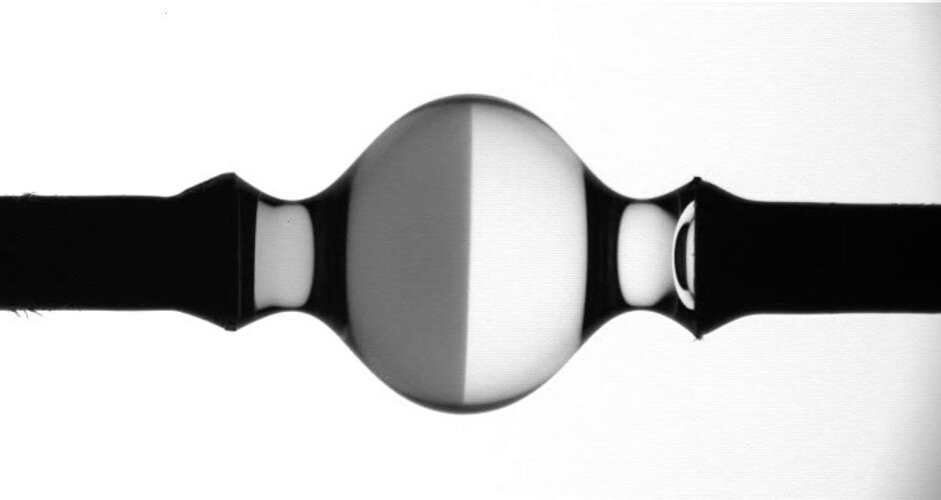Romania’s first experiment on the International Space Station is sending drops to collide head-on at controlled speeds inside a cube. Their behaviour intrigues scientists in an environment where gravity, buoyancy, convection, and sedimentation are negligible. The Dropcoal research, short for Drop Coalescence, explores droplet formation in space and on Earth.
There is a journey of fascinating physics behind every raindrop falling to the ground on Earth. Rain is the result of the complex interaction between water and Earth’s gravity, causing drops to change their shape and merge on their way down. Scientists call it coalescence – the process of two or more droplets, bubbles or particles blending to form a single, larger entity.
Droplet coalescence remains a significant challenge in fluid mechanics. Dropcoal investigates the interactions between two drops of different liquids, such as water, ethanol and methylene blue, while varying their diameters and speeds, ranging from as slow as white blood cell displacement (0.01 mm/s) to an ant’s velocity (10 mm/s). In this image, the drop on the left is coloured with methylene blue and is merging with the pure water drop coming from the right.
Monitoring how drops interact and merge in weightlessness could shed light on raindrop formation, fuel combustion and material interactions. Astronauts on long space missions could benefit from better understanding how to handle droplets when treating eye, nose and skin issues, as well as preparing injections.
Following the launch on 5 November with SpaceX’s 31st resupply mission to the Space Station, NASA astronaut Don Pettit installed the experiment in the ICE Cubes facility on ESA’s Columbus laboratory module. “This experiment looks at whether droplets merge or bounce off each other, and how fluids mix after these collisions,” explained the astronaut and chemical engineer.
The experiment is already generating the first droplets in microgravity. While a high-speed camera captures images at up to 8000 frames per second, pumps and precision motors control the droplets’ movements. The software uses image recognition to command droplet generation at the right moment.
During the commissioning phase of the experiment, Romanian teams on Earth ran a series of tests to ensure all systems functioned correctly. There are at least 560 planned collisions involving two to five millimetre-sized droplets.
Dropcoal marks an important milestone for Romania, a country that became an ESA Member State in 2011. This is the first experiment developed and built by RISE, the Romanian InSpace Engineering company.
The results of the experiment will be analysed by an international science team led by experts at the National Institute for the Physics of Lasers, Plasma and Radiation in Romania, in collaboration with the Technical University of Darmstadt, Germany, and Carnegie Mellon University in the USA.



 Image:
Droplets face to face in space
Image:
Droplets face to face in space